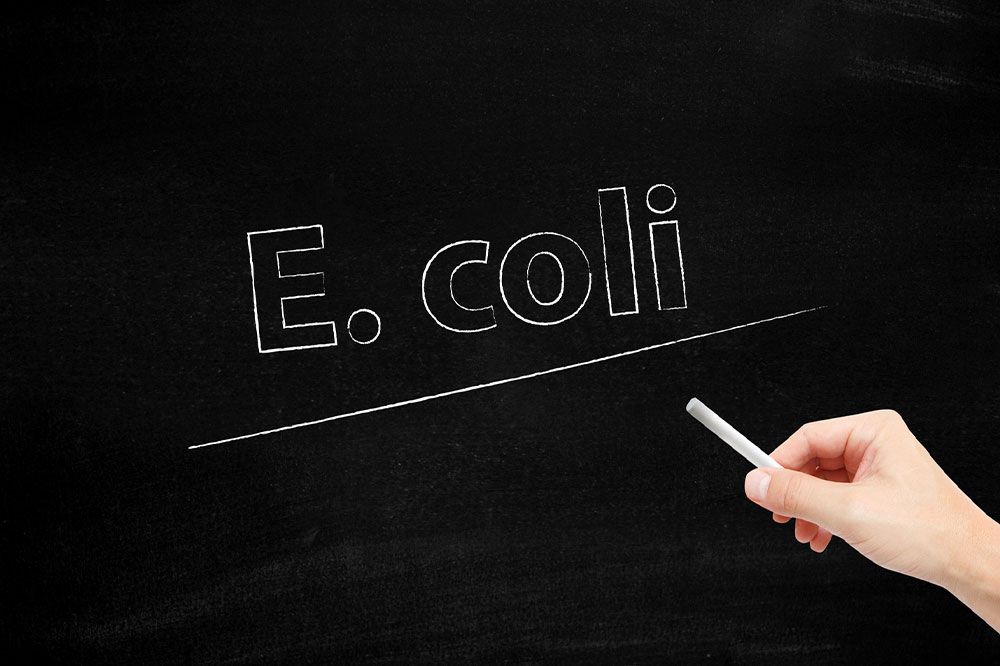Things to Know About E. Coli Infections and UTI
E. coli (Escherichia coli) is part of the Enterobacteriaceae family. It is a rod-shaped bacterium that can live in the intestines of animals and people. Most strains of E. coli are benign and even beneficial to your digestive tract. However, some strains might induce an infection if you consume contaminated food or water. While healthy adults can recover in 3-4 days, young children and older adults may face life-threatening consequences.
What are the causes of E. coli infection?
Although this bacteria is naturally present in the intestines of humans and animals, specific strains from outside the body could lead to infection.

Unhygienic food management
Unsafe food processing and preparation can lead to contamination at a residence, in a cafe or in a supermarket. Food poisoning is caused by a variety of factors, including:
Not thoroughly cleaning your hands before making or eating food.
Using dirty utensils and serving plates that results in cross-contamination.
Ingesting dairy products or mayonnaise-containing items that have gone too long without refrigeration.
Ingesting meals that have not been stored at the proper temperature.
Eating raw foods, particularly meats and poultry.
Consumption of raw seafood.
Consumption of unpasteurized milk.
Eating raw fruit that has not been fully cleaned.
Water contamination
Bacteria from human or animal feces might end up in the water due to poor sanitation. E. coli infection can be caused by consuming contaminated water or swimming in it.
Human-human transmission
Person-to-person transmission of E. coli can occur when a person carrying the bacteria does not clean their hands after passing stools. The germs spread to a new host when that individual comes into contact with someone or something else, such as food. Person-to-person E. coli transmission is especially dangerous in care homes, schools, and childcare facilities.
Animals
Individuals who work with animals, particularly cows, goats, and sheep, are at a higher risk of E. coli infection. Anyone who comes into contact with animals or works in a setting where animals are present should wash their hands frequently.
Who is susceptible to E. coli infection?
People who interact with an E. coli strain that causes sickness can become infected. The people listed below are the most prone to the condition:
Newborns and children.
Senior citizens.
Individuals with weak immune systems, including those with cancer, diabetes, HIV, and women who are pregnant.
Infections that can develop due to exposure to E. coli
Urinary tract infection
Infection of the intestine (certain strains).
Invasion of infection (rare, except in neonates).
E. coli is the most prevalent cause of UTIs, as the bacteria travels into the urethra from the perineum. Prostatitis and pelvic inflammatory illness may also be caused by E. coli (PID).
Urinary tract infection due to E. coli
Urinary tract infections due to exposure to E. coli are frequent, especially in women, newborns, and the elderly. One in every two women and one in every twenty males will have a UTI in their lifetime. Because the urinary tract exit is close to the anus, bacteria can migrate from the gastrointestinal system to the urine tract. According to the National Kidney Foundation, 80 to 90 percent of UTIs are caused by Escherichia Coli.
It is advisable to wipe or wash using a front-to-back motion to lower the risk of bacteria exposure. The following are examples of UTIs that one may develop:
Urethritis is a urethral infection.
Cystitis is a bladder infection.
Pyelonephritis is a kidney infection.
Vaginitis is a vaginal infection.
Treatment for urine infection due to E. coli
Urine infection due to E. coli must be treated early. Doctors are likely to recommend antibiotics to destroy bacteria and fight infections. The prescriptions will target the specific bacteria causing your infection. Nitrofurantoin is one of the most regularly used antibiotics.
Indicators of E. coli infection
A urinary tract infection may cause the following symptoms:
Pain while having sex.
Ache in the penis
Lower back pain or flank pain.
Fatigue.
Chills with a fever that can go above 100 degrees Fahrenheit temperatures.
Vomiting
Burning sensation while urinating.
Along with the symptoms mentioned above, when one develops urinary infections due to exposure to E. coli, they can also experience:
The need to urinate more frequently and urgently, even if only a few drops.
Bladder fullness even after urinating.
Pain over the pubic bone.
Urine that is hazy, bloody, or extremely odorous.
Patients experiencing these symptoms should consult a doctor immediately. Urinalysis and urine culture are two initial tests the doctor conducts to identify a urinary tract infection.
These tests will look for red blood cells, white blood cells, and germs in the urine to detect the presence of E. coli and understand the symptoms. Essentially, the presence of white and red blood cells in your urine can indicate an illness. It can help determine whether the bacteria in the urine sample is E. coli or another strain of bacteria. These are important tests since they aid in determining the best form of treatment.

